The other day husband and I made our first visit to Worcester, a lovely, small cathedral city in the Midlands, skirted on its western side by the River Severn. The weather wasn’t great, but at least the rain wasn’t torrential.
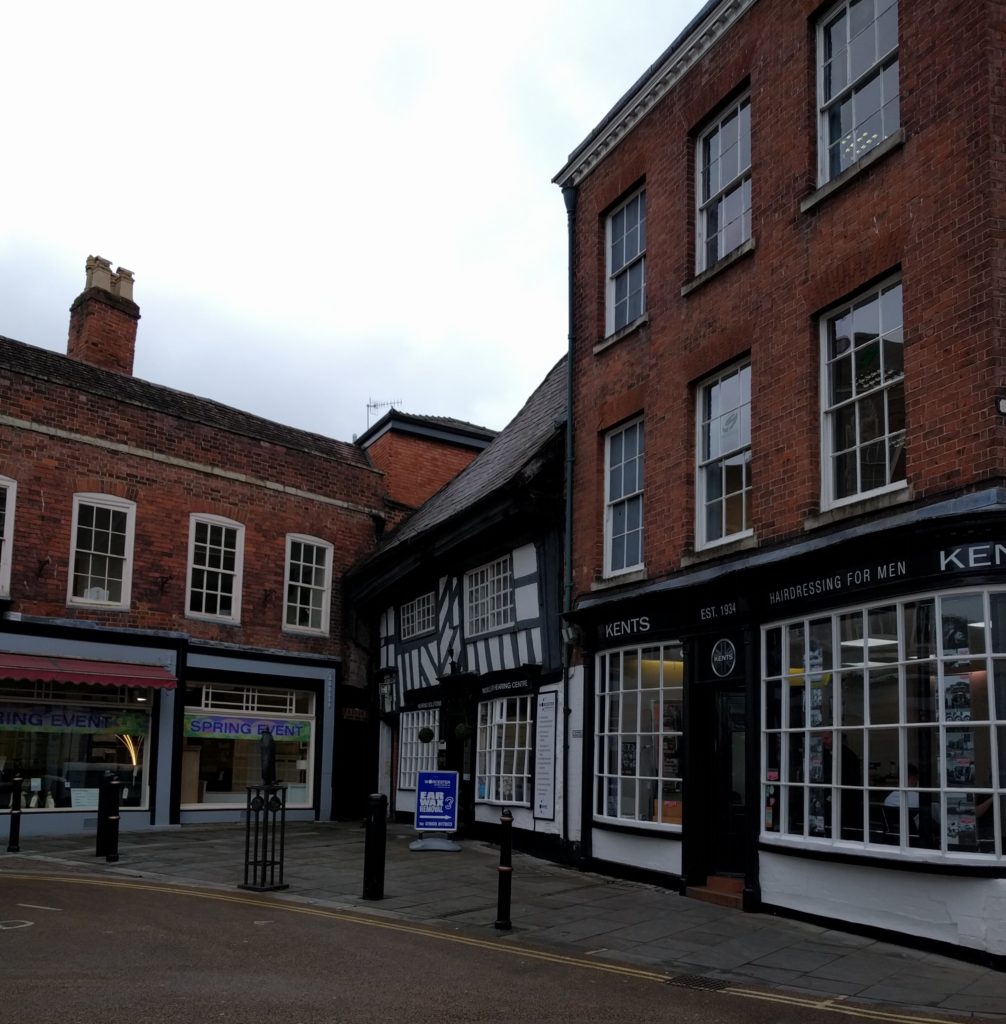
First stop, after finding a parking space, was the Tourist Information Centre on the High Street. There we picked up a free map, and received lots of useful advice from the very helpful lady on the desk. Conveniently, next door to the Information office is the magnificent Guildhall, a building dating to 1721, which once housed the Law court and prison cells. This is still very much a working building, as it is now home to the Council Chamber and the Mayor’s Parlour.
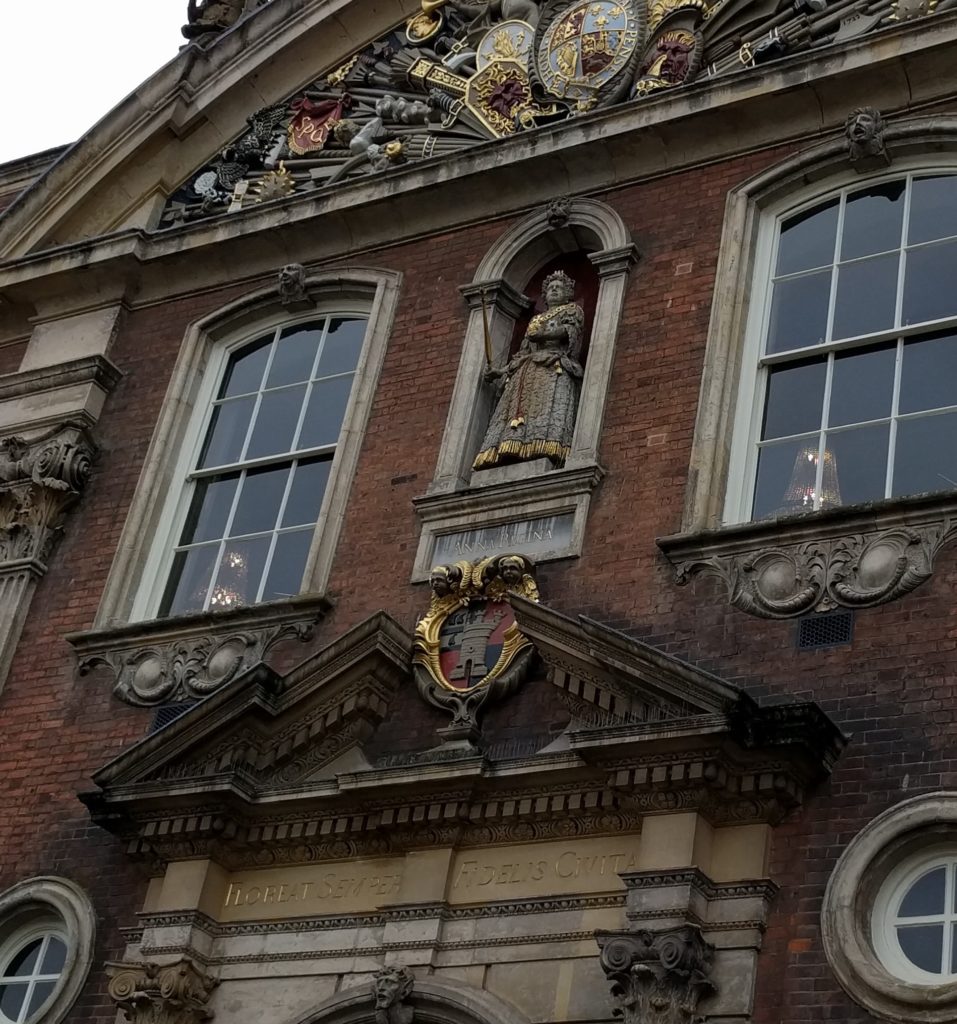
Stepping through the impressive doorway, flanked on the outside by statues of Charles I and his son, Charles II, we entered the large Lower Hall, where portraits of Worcester worthies lined the walls. There are cabinets containing examples of Royal Worcester porcelain, some of which were commissioned especially to commemorate various Royal anniversaries
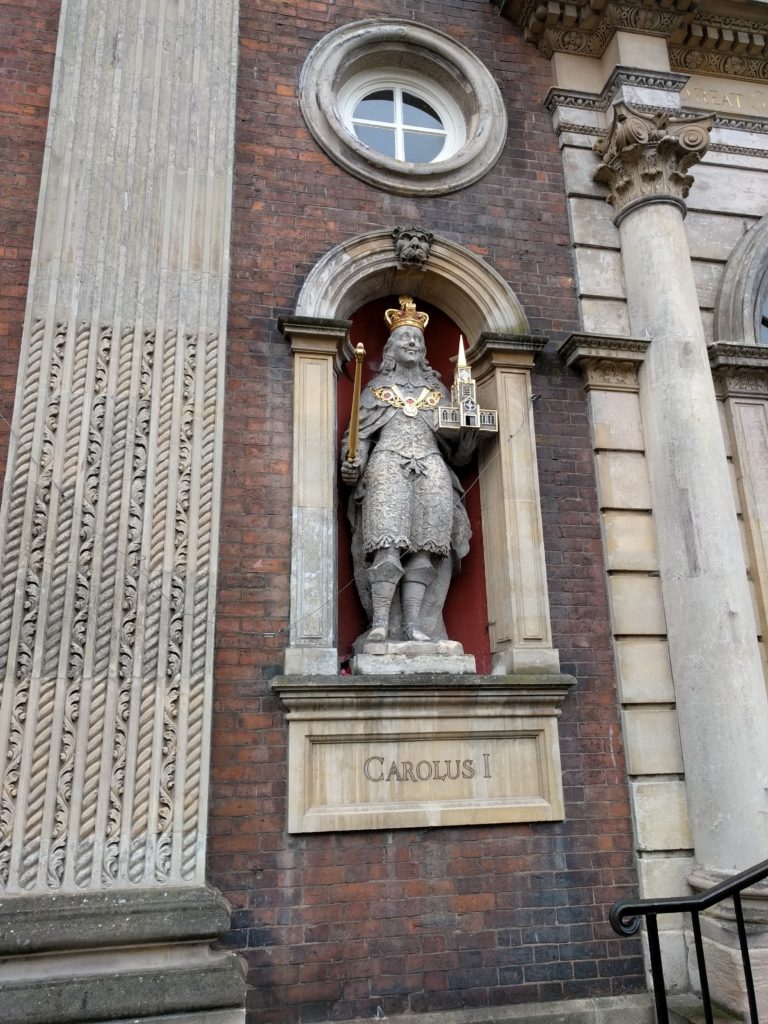
Charles I 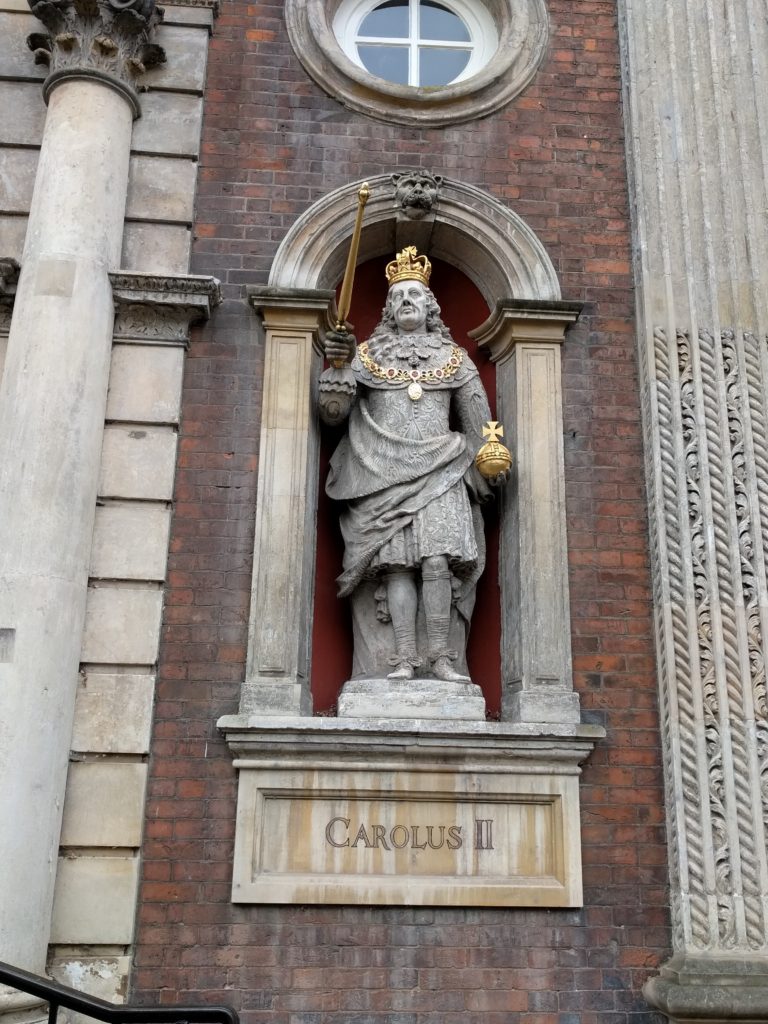
An object that caught my eye though was not porcelain, but a cannon with links to the Napoleonic Wars. This inscribed Arabic gun, made in 1792, was captured from the Arabs by the French, and in turn taken from them by the crew of the Royal Navy ship the Berwick, in a successful action near Toulon in 1813. It was presented to the Mayor, Corporation, and citizens of Worcester, by Captain Edward Brace, commander of the Berwick, in 1826.
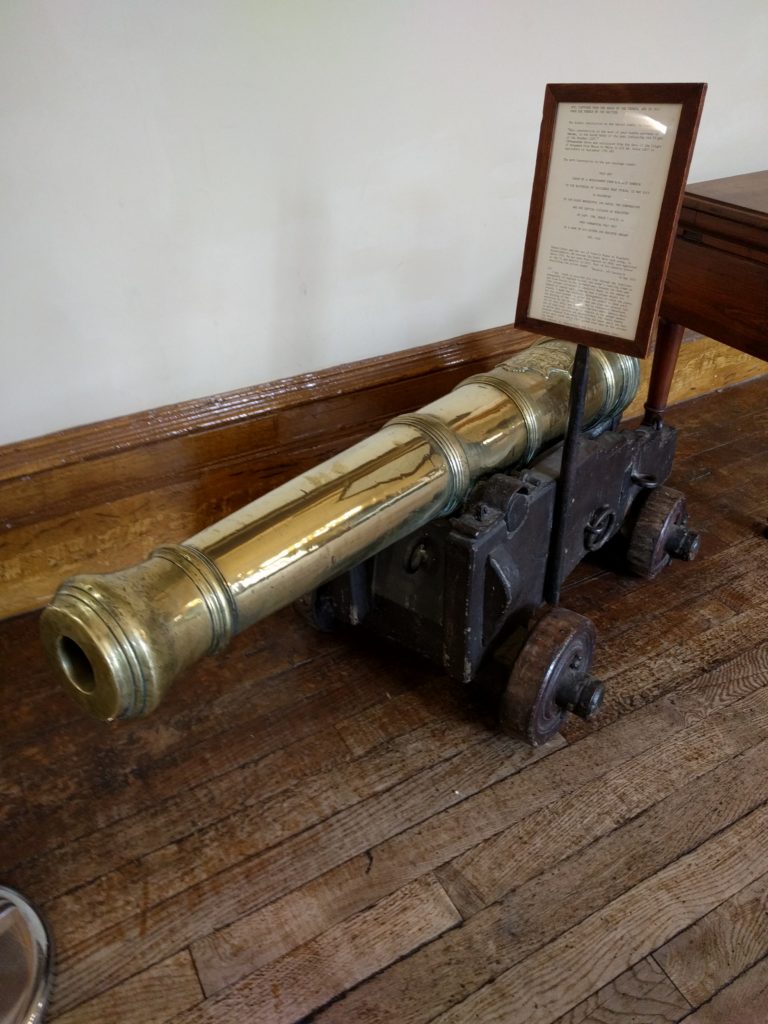
There are several rooms on the ground floor that one can wander through, interesting mainly for their architectural features and large portraits. Sadly, the Assembly Room on the top floor was not open to the public on the day of our visit, but according to the Guildhall website, it is something worth seeing with its painted Italianite ceiling and chandeliers. I did manage to get a glimpse of the chandeliers through the windows, as you can see in this shot here. Definitely something to come back to see on my next trip.

From there we wandered down the High Street, lined with every shop you could wish for. What sets Worcester’s High Street apart from other city high streets is that most of the shops are housed in architecturally pleasing buildings. Worcester’s High Street seems to have escaped some of the worst poor planning decisions, so prevalent in the Britain of the 1960’s and 1970’s, that saw ancient buildings replaced by square concrete blocks. Large parts of the medieval centre were indeed demolished, but there are fortunately still significant medieval buildings still standing along other streets near the city centre.
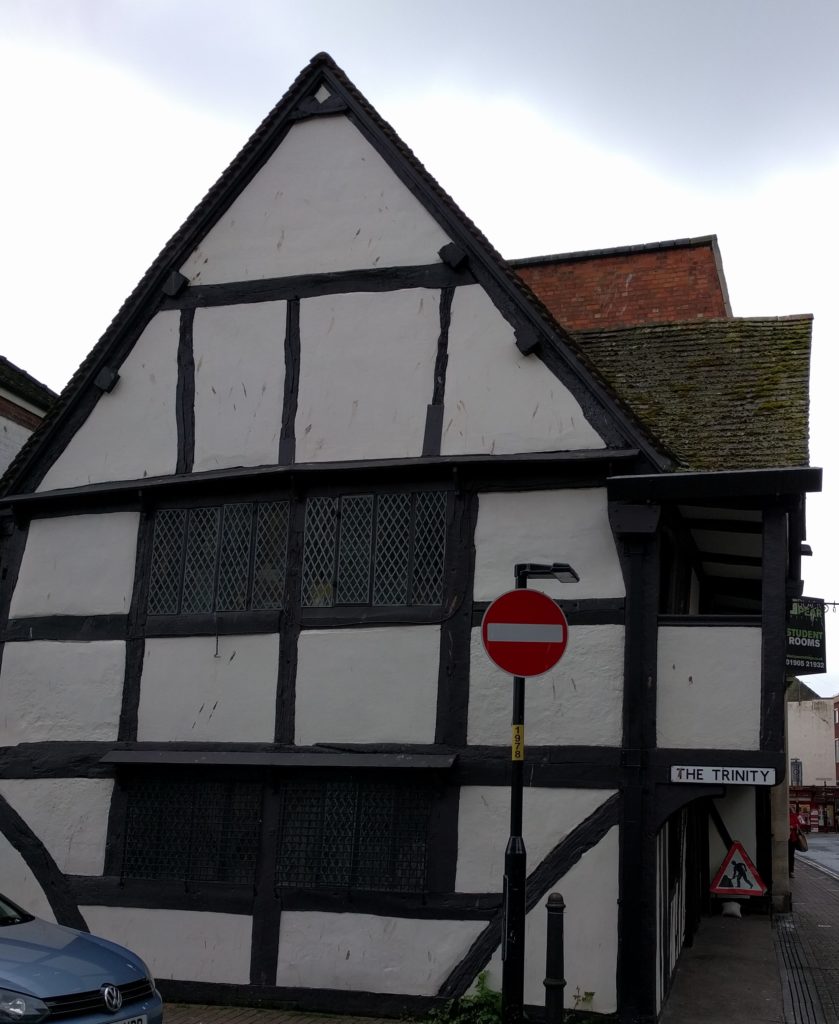
Continuing along the High Street onto The Cross and Foregate Street, we eventually reached our destination, the City Art Gallery and Museum. As we didn’t have too much time, we headed straight for the Young Turner Exhibition, which I’d only learnt about the day before our trip. This Ashmolean touring exhibition focuses on Joseph Mallord William Turner’s drawings, paintings and engravings of Oxford, from the 1780s to the 1810s and showcases his interest in Gothic architecture, his expertise in depicting it, and his growing knowledge of perspective.

There are examples of the large-scale diagrams he used to demonstrate perspective in his lectures on perspective at the Royal Academy. I particularly enjoyed seeing how something relatively simple was worked up into a beautiful depiction of Pulteney Bridge, Bath.
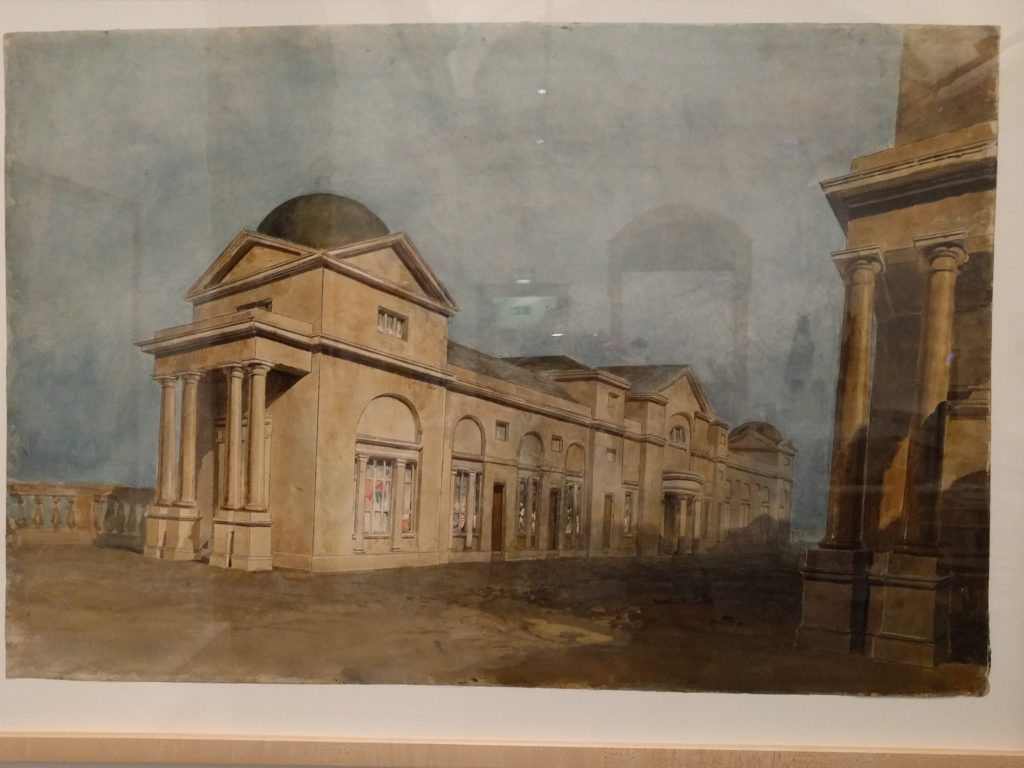
There were so many elements of this exhibition that I loved — the charming scenic watercolour of Oxford, painted when he was twelve years old, the watercolour views of Oxford Colleges done for the Oxford Almanacs and their corresponding engravings.
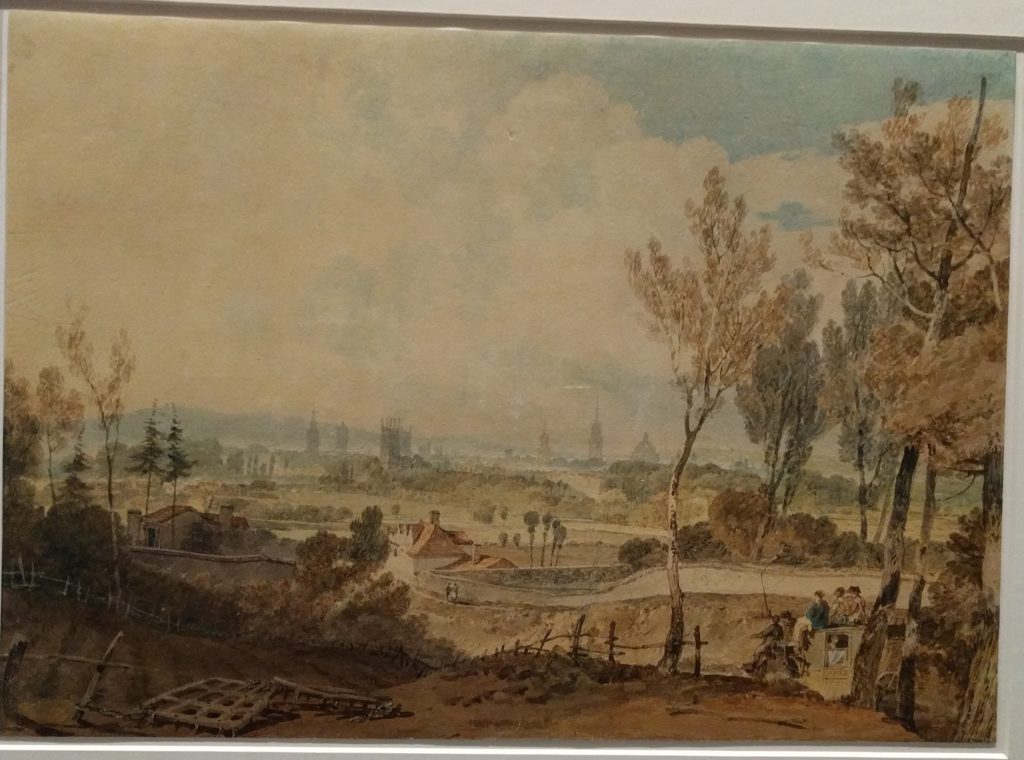
However, my favourite, and the highlight of the exhibition, is Turner’s View of the High Street, Oxford, painted 1809-10. This is a street I know well, and it is fantastic to see that the view today is pretty much the same as in Turner’s day, albeit that he did cheat a little by showing Carfax Tower in the distance, something that cannot be seen in real life from that viewpoint.

I highly recommend a trip to Worcester to see this exhibition if you are in the vicinity; it is on until 6th July. After that, its final destination is Banbury Museum, where it can be seen from 28th September 2019 until 11th January 2020.

As time was short, we decided to save further exploration of the museum for another day and headed off to explore more of Worcester’s historic streets. The lady in the information centre had particularly recommended seeing New Street and Friar Street. If you are interested in medieval and Tudor architecture, this is the place to go. I loved the ancient inns and taverns, one dating from 1577, and said to be where Charles II escaped his enemies after the Battle of Worcester on September 3rd 1651.
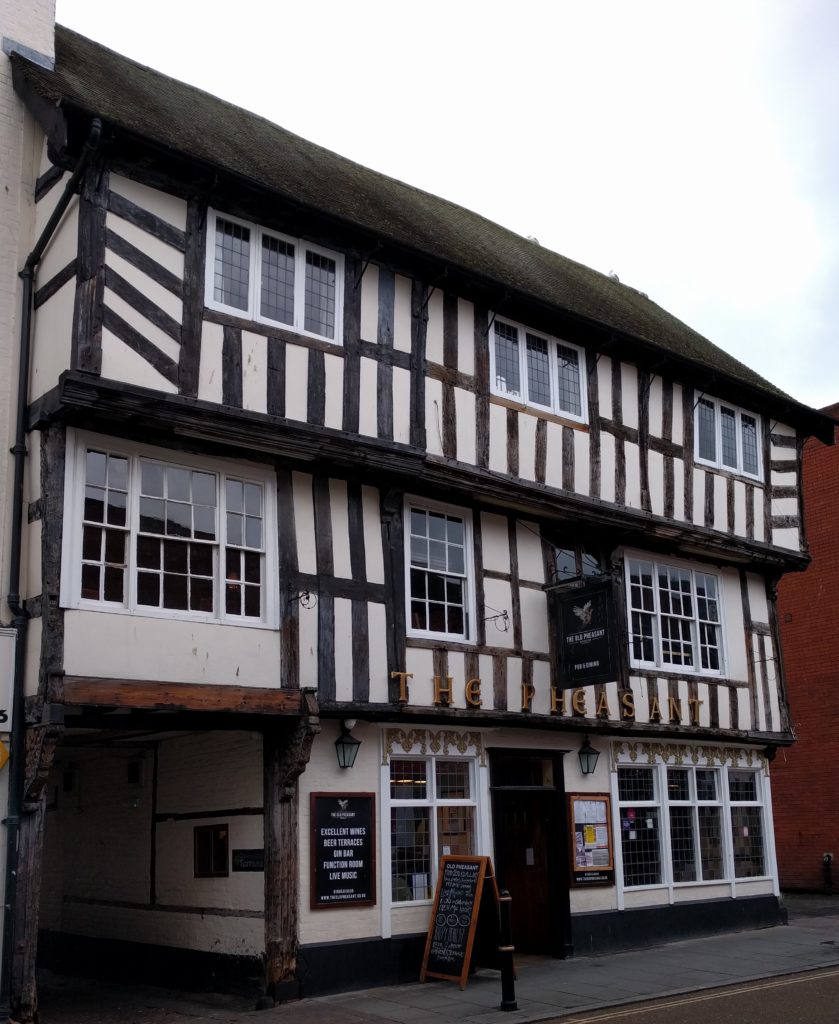
On Friar Street stands Greyfriars House and Garden, a late medieval merchant’s house, built in 1480, saved from demolition in the 1930s, and now belonging to the National Trust.
Again, we only had time for a brief whistle-stop tour of the house, but we managed to see the rare Georgian wallpaper framed in six panels in the dining room, and the three Italian 16th century majolica tiles depicting biblical scenes over the fireplace in the same room.
All too soon it was time to go home, but Worcester is definitely a place I intend to return to. I feel we only scratched the surface of this lovely historic city. If you know of any other ‘must-see’ destinations in Worcester for my next trip, do let me know.

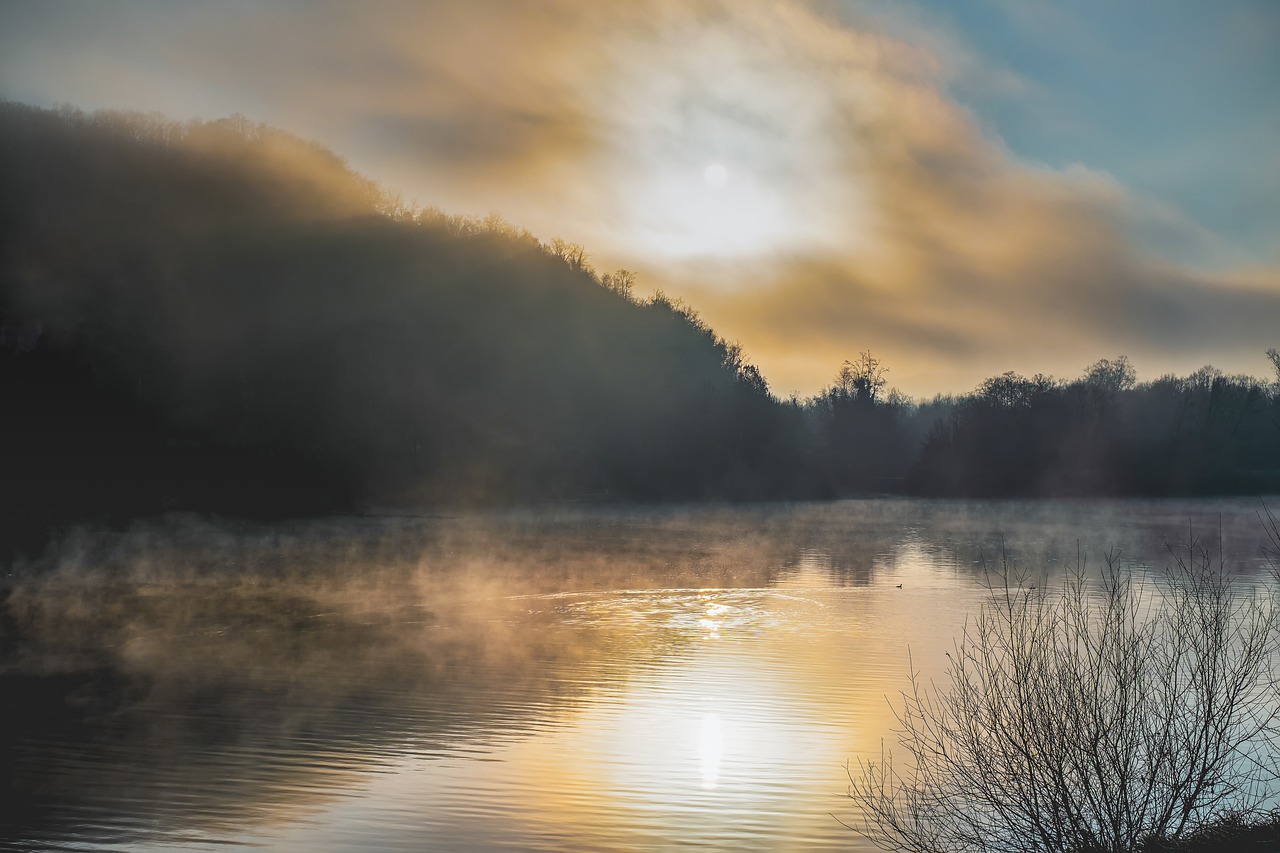
Hi Penny,
Glad you had an enjoyable trip to sunny (or not so sunny) Worcester! I thought you might be interested in our Timber-framed buildings leaflet that has just been printed – available online here, or I’d be happy to send you a copy if you’d like it in hard copy.
https://waas-yh3wbnoii1rjnushv.netdna-ssl.com/wp-content/uploads/2019/04/Timber-framed-buildings-of-Worcester-online-view.pdf
Best wishes,
Sheena Payne-Lunn (Historic Environment Record Officer, Worcester City Council)
Hi Sheena, Yes we both enjoyed our few hours in Worcester and plan to return in the not too distant future, hopefully for a bit longer! Thank you also for bringing my attention to your new leaflet, which I’ve now downloaded. Best wishes, Penny